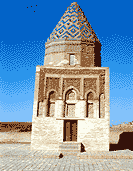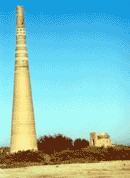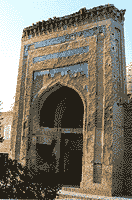Topic: Economy & business
As it has been already informed, the International Business Arbitration organised on the initiative of the German Technical Co-Operation Society with the assistance and participation of the government of Turkmenistan, the Embassy of the Federative Republic of Germany and the United Kingdom of Great Britain and Northern Ireland to Turkmenistan has been held in the Turkmen capital. The members of the Cabinet of Ministers of Turkmenistan, leading lawyers of the country, representatives of the legislative and juridical bodies and economic and trade departments took part in the work of the forum at which the urgent issues of the international co-operation in that significant legislative sphere were discussed. The organisers and participants of the conference shared their impressions of the conference.
Dr. Rolf Knieper, Professor of Bremen University, representative of the German Technical Co- Operation Society:
“First of all I would like to say that an interesting and constructive exchange of views between our and Turkmen experts took place within the framework of the International Business Arbitration Conference. I saw that our Turkmen partners are full of desire to raise the national legislation to the international level and it corresponds to the wish of the head of the Turkmen state Saparmurat Niyazov who did us the honour receiving us at his Palace. We, international consultants, will help the Turkmen specialists to prepare for the ratification of the New York Convention on recognition the arbitration decisions and to draw up a state law on the international arbitration. I should also state a high organisational level of the present forum. In my opinion, Turkmenistan has a great infrastructure and there are all necessary conditions for holding international conferences in Ashgabat. Political stability in the state and all other factors prove that Ashgabat could be a regional centre for settlement of the investment disputes in case of further development of the legislative basis of the country. Kuala-Lumpur is one of the largest centres of the international arbitration in Asia. The potential of Ashgabat is not less.”
Dr. Robert Briener, President of the International Court of Arbitration of the International Chamber of Commerce (Paris):
“For some years I have been assisting Professor Knieper in organisation of his work, modelling the arbitration laws and systems of the arbitration legal proceedings in different countries. By his request I agreed to take part in this representative forum in Turkmenistan to listen to the opinions of the Turkmen politicians and competent officials. It was a great honour for me to be in the capital of independent and neutral Turkmenistan and to represent the Paris International Chamber of Commerce at this significant forum. At present the problem of the international arbitration policy and co-operation in the sphere of the business arbitration is urgent for Turkmenistan as efficient economic activities are being carried out in Turkmenistan possessing colossal natural resources. International arbitration is a reliable system of solving the disputes in the trade and economic relations between different states and the most important factor of harmonisation of legislation of different countries. In this context, the theme of Turkmenistan’s integration with the international arbitration system as soon as possible is of great significance for gaining ‘a legislative confidence’ by it in the sphere of international business and proper regulation of the international commercial disputes.”
Ian Paulson, President of the London Court of International Arbitration:
“The international conference held in the Turkmen capital proves that Turkmenistan is ready to improve its legislation system and to co-operate within the framework of the international lawmaking. Turkmenistan attracts foreign investors by many reasons and, first of all, because the political order reigns in the country and its legislation system is developed; it is very important for economic co-operation. As I could see, my Turkmen colleagues had sufficient experience and were highly professional. It was pleasant for me to listen to them and to discuss the themes common to us. I would like to say one more thing: I was greatly touched by the cordial welcome in Ashgabat. I will remember the remarkable people who met us everywhere with their smiles and cordial welcome.”
06 June 2005
Source: Turkmendowlethabarlary News Agency
Posted by countryturkmenistan
at 10:05 AM
Updated: Wednesday, 15 June 2005 12:23 PM

 "A PRICELESS PEARL IN TURKMEN ART TREASURY”
"A PRICELESS PEARL IN TURKMEN ART TREASURY” At the far end of Turkmenistan, 150 km to the northwest of Dashoguz, lies Koneurgench City (population 31.400). The outskirts of the city adjoin the territory of the State Historical -Cultural Museum - Reserve, covering nearly 640 hectares, and was founded in 1985. Here one can find several magnificent architectural memorials of the 13th - 14th c. These include one of the tallest minaret in Middle Asia, and various numbers of common buildings in medieval epoch: mausoleums, medressas and fortresses.
At the far end of Turkmenistan, 150 km to the northwest of Dashoguz, lies Koneurgench City (population 31.400). The outskirts of the city adjoin the territory of the State Historical -Cultural Museum - Reserve, covering nearly 640 hectares, and was founded in 1985. Here one can find several magnificent architectural memorials of the 13th - 14th c. These include one of the tallest minaret in Middle Asia, and various numbers of common buildings in medieval epoch: mausoleums, medressas and fortresses.  Ancient Kone-Urgench was considered one of the major cities of the East. The scientists who studied the topography of Gurgench/Urgench considered that the territory was as large as 1000 hectares in the X-XIV c.c. AD. This site is presently protected by the Government. It occupies 640 hectares. Legend tells that the town Kine-Urgench was destroyed and re-built seven times. Beginning 1681 AD, Kone Urgench came under the control of Arab rules. Between 1017- 1034 AD , Kone Urgench was governed by Ghaznavids. Abu-shtegin, a turkish slave, founded a new state which lasted until 1221 AD. In 1221 Urgench was destroyed by the Mongols. In 1321, the town was annexed to the Golden Horde. In the middle of the 14 c. Hussein Sufi, a Qongart Turk, founded the Sufi Dynasty with the support of the Khan of the Golden Horde. In 1388 the town was destroyed by Temur Link, and lost a status of a city. In 1646, when the Amu-Darya river changed its course, life stopped here. After the construction of the canal Khanyap by the Khans of Khiva, the town was re-born.
Ancient Kone-Urgench was considered one of the major cities of the East. The scientists who studied the topography of Gurgench/Urgench considered that the territory was as large as 1000 hectares in the X-XIV c.c. AD. This site is presently protected by the Government. It occupies 640 hectares. Legend tells that the town Kine-Urgench was destroyed and re-built seven times. Beginning 1681 AD, Kone Urgench came under the control of Arab rules. Between 1017- 1034 AD , Kone Urgench was governed by Ghaznavids. Abu-shtegin, a turkish slave, founded a new state which lasted until 1221 AD. In 1221 Urgench was destroyed by the Mongols. In 1321, the town was annexed to the Golden Horde. In the middle of the 14 c. Hussein Sufi, a Qongart Turk, founded the Sufi Dynasty with the support of the Khan of the Golden Horde. In 1388 the town was destroyed by Temur Link, and lost a status of a city. In 1646, when the Amu-Darya river changed its course, life stopped here. After the construction of the canal Khanyap by the Khans of Khiva, the town was re-born.  II Arslan
II Arslan  Minaret of Gutlugh Temur/XI-XII c.c.
Minaret of Gutlugh Temur/XI-XII c.c. The monument of Nedjimeddin Kubra is located in the western part of Kone Urgench. The monument is named after Ahmed ibn Omar Abuidjenap Nedjimeddin al Kubra al Khorezmi. He was born in Urgench in 1145-46, and became the founder of the Kubravid's school of Sophism. Nedjmeddin Kubra was famous not only as philosopher, but also as a painter, physician, chess master and talented general. Seven books and 24 rubais written by Kubra survived to this day. This monument is a perfect architectural construction. Its portal dates back to the XII-XIII c.c.. The monument was rebuilt during the era of prosperity of Khorezm, and again after the Mongol invasion.
The monument of Nedjimeddin Kubra is located in the western part of Kone Urgench. The monument is named after Ahmed ibn Omar Abuidjenap Nedjimeddin al Kubra al Khorezmi. He was born in Urgench in 1145-46, and became the founder of the Kubravid's school of Sophism. Nedjmeddin Kubra was famous not only as philosopher, but also as a painter, physician, chess master and talented general. Seven books and 24 rubais written by Kubra survived to this day. This monument is a perfect architectural construction. Its portal dates back to the XII-XIII c.c.. The monument was rebuilt during the era of prosperity of Khorezm, and again after the Mongol invasion.  Akgaima, kojime and ilme (or ildirme - chain stitching) are basic types of Turkmen embroidery stitches. Every stitch is widespread in certain groups of Turkmen. Akkaima is never met singly; sometimes it is combined with embroidery, which is made according to the technique of the second type - kodjp-me (or just keshde - embroidery), which is quite common on its own. Both akkaima and kojime are widespread amongst Turkmen - Tekins, Goklens, Sariks and other small groups living amongst them. Akkaima is mainly applied to men's tyubeteykas; this very stitch is also used for the neck of dresses and shirts, and the lower edges of women's trousers.
Akgaima, kojime and ilme (or ildirme - chain stitching) are basic types of Turkmen embroidery stitches. Every stitch is widespread in certain groups of Turkmen. Akkaima is never met singly; sometimes it is combined with embroidery, which is made according to the technique of the second type - kodjp-me (or just keshde - embroidery), which is quite common on its own. Both akkaima and kojime are widespread amongst Turkmen - Tekins, Goklens, Sariks and other small groups living amongst them. Akkaima is mainly applied to men's tyubeteykas; this very stitch is also used for the neck of dresses and shirts, and the lower edges of women's trousers.  The Turkmen made the transition to an agricultural lifestyle fairly recently and their cultural characteristics are unique in many ways.
The Turkmen made the transition to an agricultural lifestyle fairly recently and their cultural characteristics are unique in many ways.